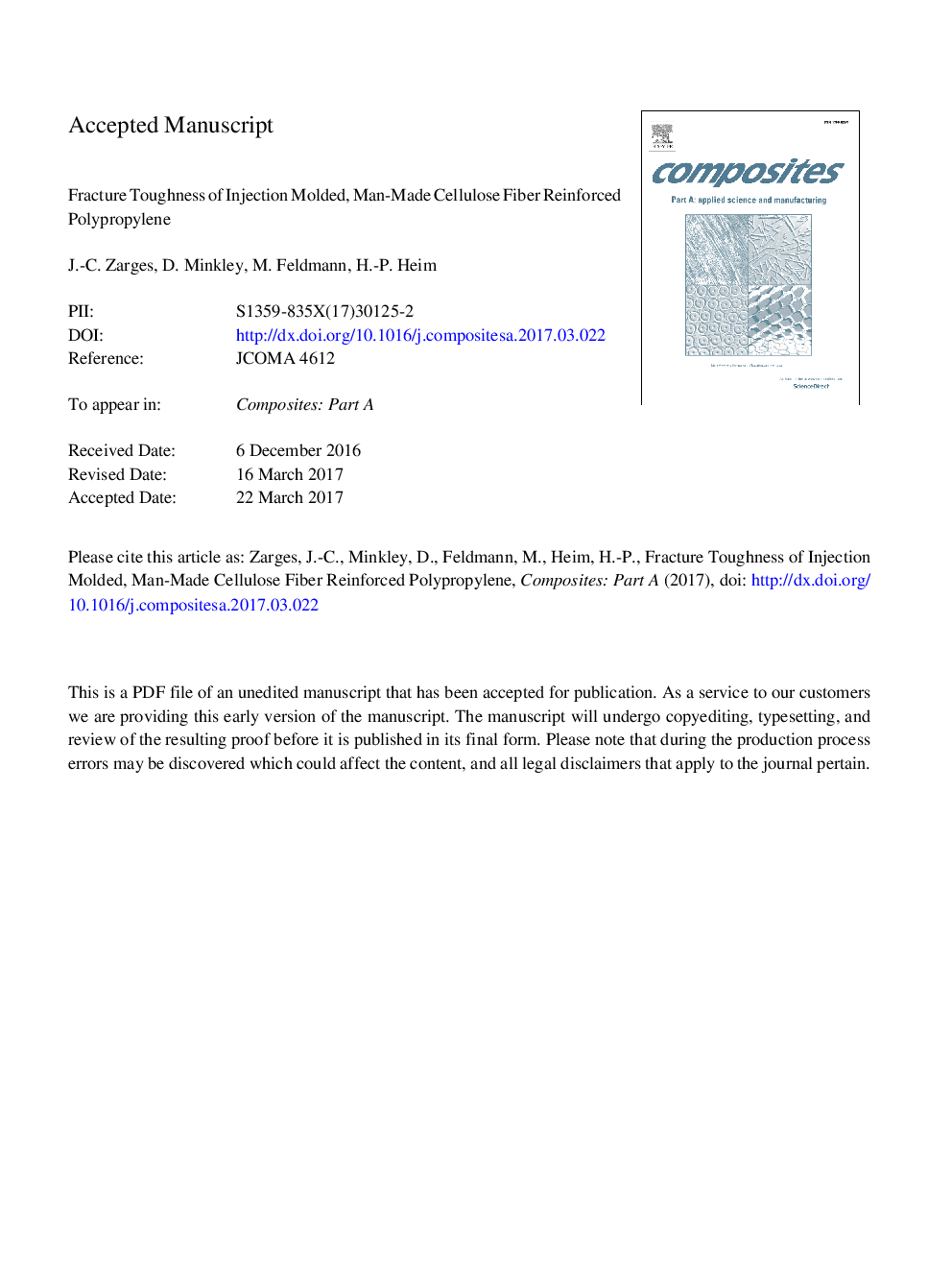| Article ID | Journal | Published Year | Pages | File Type |
|---|---|---|---|---|
| 5439540 | Composites Part A: Applied Science and Manufacturing | 2017 | 31 Pages |
Abstract
This investigation focuses on the fracture toughness of injection molded compact tension (CT) specimen of man-made cellulose fibers reinforced composites with PP as their matrix and different varying fiber contents. The influence of the fiber orientation and the addition of a coupling agent on the fracture toughness was determined using an optical strain measurement and a micro computer tomography. It was verified that a reinforcement with man-made cellulose fibers leads to significantly higher values of fracture toughness and J-Integral in comparison to glass fiber reinforcement. Furthermore, it was demonstrated that the majority of fibers in the CT specimen show an orientation perpendicular to the flow direction of the injection molding process. Thus, a notch direction parallel to the flow direction leads to significantly higher values. This is a result of less local strains around the crack path, as well as of a higher amount of fiber pull-outs in the fractured surface. The coupling agent MAPP creates stronger fiber-matrix adhesion, which results in increasing values of the fracture toughness but a decreasing of the J-Integral values due to less fiber pull-outs.
Related Topics
Physical Sciences and Engineering
Materials Science
Ceramics and Composites
Authors
J.-C. Zarges, D. Minkley, M. Feldmann, H.-P. Heim,
